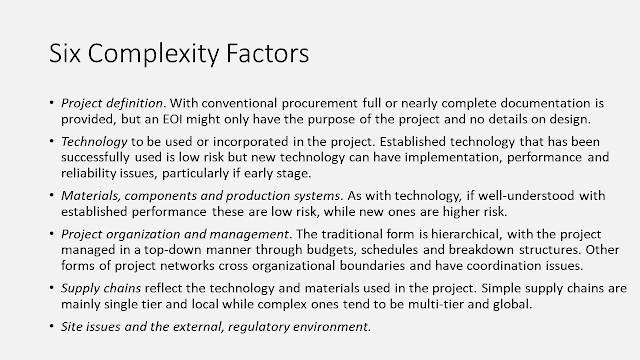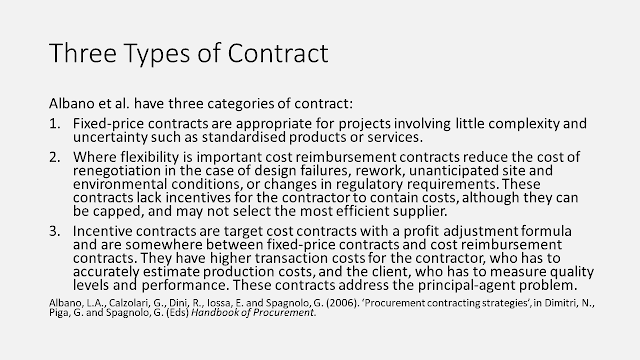Projects Minor, Major and Mega
These days we live and work in a world of projects, with everything from planning a holiday, a product launch or a political campaign seen as a project. Organisations have project teams and use project-based management systems. There is a project management book of knowledge, known as the PMBoK, taught in the many PM courses now available.
Major projects, and public projects in particular, are frequently associated with cost blowouts and schedule slippages. Some projects become notorious for cost overruns, like the Sydney Opera House (1,400 percent), the Scottish parliament building (1,000 percent) or Boston’s Big Dig tunnel (600 percent). In fact, the great majority of large projects like airports, pipelines, tunnels, railways and roads are not delivered on time or within budget. Software projects are rarely delivered on budget. However, about 20 percent of major projects are delivered on time and on or below estimated cost, so although that may be difficult and unusual it is not impossible.
The 20 percent success rate comes from a database of major projects built by Bent Flyvbjerg, a Danish researcher now at Oxford University. Starting in the early 1990s he began collecting project cost and time data, initially for transport (roads, rail and bridges) then extended to include water, power, oil and gas, IT, and aerospace projects. That data became the basis for many journal papers on project performance and the 2003 book by Flyvbjerg, Bruzelius and Rothengatter Megaprojects and Risk: An Anatomy of Ambition.
Flyvbjerg and his colleagues coined the phrase ‘Survival of the unfittest’ to describe projects that get approved and built despite their poor economic and financial characteristics and outcomes. Their key characteristics of projects are:
- They are inherently risky due to planning horizons and complex interfaces between the project and its context, and between different parts of the project;
- Costs and benefits are many years in future, and are large enough to change their economic environment with unintended consequences;
- Stakeholder action creates a dynamic context with the escalation of commitment driven by post hoc justification of earlier decisions;
- Decision making and planning are processes with conflicting interests;
- Often the project’s scope or ambition changes significantly after starting work;
- No allowance is made for unplanned events (known as ‘black swans’) so budget and time contingencies are inadequate;
- Misinformation about costs, benefits, and risks is the norm, and in some cases is strategically misrepresented to get a project started and ensure commitment;
- The result is cost overruns and/or benefit shortfalls with a majority of projects.
There is also the 2023 book from Flyvbjerg and Dan Gardner, How Big Things Get Done: The Surprising factors Behind Every Successful Project, From Home Renovations to Space Exploration. Thanks to Gardner’s contribution this is a brisk, readable book, not another academic tome, and it made its way onto the best business books lists of the Economist, Financial Times and McKinseys. Although it covers the factors and issues in the 2003 book there is less data and analysis, and this book has more examples of different types of projects (buildings, films, tunnels, railways etc.) and the people responsible. Each of the nine chapters addresses a specific issue, illustrated by interesting stories about the people and projects featured, and presents a key concept, the ‘universal drivers that make the difference between success and failure’.
The first chapter is ‘Think slow, act fast’, meaning plan thoroughly and as completely as possible before staring work, or ‘think first, then do.’ Once started a project should be delivered as quickly as possible, to reduce the risk of something going wrong. The chapter has data from Flyvbjerg’s database of 16,000 projects: 91.5% go over their time and budget; 99.5% go over cost and time and under-deliver on benefits. The typical project has underestimated costs and overestimated benefits, and the risk of a project going disastrously wrong (not 10%, but 100% or 400% over budget) is surprisingly high.
Chapter 2 is ‘The commitment fallacy’, where projects are approved before alternatives are explored and/or continued after money has been spent (the start digging a hole strategy). Strategic misrepresentation is an organisational and institutional explanation where project promoters produce biased appraisals at the approvals stage (underestimated costs + overestimated benefits = approval) and projects that get funded are ones that look best on paper (i.e. have largest errors) not the best projects. Another explanation is psychological, from Daniel Kahneman’s ‘planning fallacy’ for decisions based on delusional optimism about the time needed to complete tasks. Premature commitment leads to poor outcomes because people assume What You See Is All There Is – the WYSIATI fallacy – focusing exclusively on what is in front of them and not exploring alternatives.
In chapter 3 a kitchen renovation is the example, a project that expanded and grew after starting and blew its budget. Although planned well it did not start by asking ‘why are you doing this?’ The point is to decide what the project is for first, before thinking about how to achieve that goal. The first requirement for a successful project is to select the right one, and whether or not to proceed. Chapter 4 is ‘Pixar planning’, which is spending a lot of time exploring an idea with many iterations to get to proof of concept stage. Often repeated advice is the three words ‘Try. Fail. Again.’ The authors say we are good at learning by tinkering, ‘which is fortunate because we’re terrible at getting things right the first time.’ Chapter 5 argues for the importance of experience and tacit knowledge, and shows how common it is for such a basic insight to be ignored.
Chapter 6 introduces Reference Class Forecasting, a solution to optimism bias and the illusion that a project is unique. This involves three steps: Identification of a relevant reference class of past, similar projects; establishing a probability distribution for the reference class; and comparing the specific project with the reference class distribution. From the comparison reliable forecasts of a project’s budget and schedule can be made. In chapter 7 the idea that ingenuity and creative chaos leads to great outcomes is refuted, it is the occasional success, which is an exception, that makes this such a good story.
The importance of getting the team right is Chapter 8, with British Airport Authority’s 2007 Heathrow Terminal 5 the example project. This was a famously successful megaproject. The delivery of T5 on time and on budget, with a remarkable safety record, was due to the three inter-related factors of risk management, integrated teams, and the alliance contract. BAA held all the risk and an incentive contract meant suppliers and contractors were motivated to find solutions and opportunities. BAA used in-house project management teams where traditional boundaries were broken down and replaced by colocation, so people from different firms worked in integrated teams in BAA offices under BAA management. The focus was on solving problems before they caused delays.
Chapter 9 argues modularity delivers projects, faster, cheaper and better because it allows repetition, and repetition allows learning by doing. Rather than building one huge thing the Lego approach is to make modules that can be assembled into buildings, cars, cakes, satellites and subway stations. In the database the most successful projects (i.e. least likely to have cost overruns) are energy projects for solar, wind and thermal generators that are inherently modular. At the other extreme are nuclear power plants and waste storage, hosting Olympic Games, and hydroelectric dams, ‘all classic ‘one huge thing’ projects’. The chapter closes with an appeal to address climate change through building out the energy transition as quickly as possible.
The book ends with eleven heuristics for better project leadership that collect the book’s key points. These are ‘rules of thumb used to simplify complex decisions’ such as: Hire a masterbuilder; Get the team right; Take the outside view (i.e. use a reference class); Build with Lego; Think slow but act fast; Think right to left (i.e. start with your goal, then identify the steps to get there); and Say no and walk away. Although these may seem obvious, the point is how often they are not followed and how many projects go over time and budget, and areled by people with only partial competence with no provision made for black swan events.
Flyvbjerg and Gardner argue a significant reason for poor decisions on projects is unwarranted optimism about outcomes, the planning fallacy. Planners underestimate the time, costs, and risks due to size, gestation and time for delivery, and overestimate the benefits of projects. In some cases there is strategic misrepresentation of costs and benefits. After a project has started there are the risks of escalated commitment and lock-in, scope changes, and conflicting interests. None of these risks are unknown or mysterious, which raises the question of why so many projects have such poor outcomes.
The answer is often the quality and competence of project managers. A 2016 infrastructure report from the McKinsey Global Institute, the think tank for the management consultancy, found ‘Cost overruns for large projects average 20 to 45%. We often see cost differences of 50 to 100% in similar projects carried out by different countries, even those in similar income levels. If countries apply the best practices that have already been proven effective elsewhere, they can achieve remarkable results.’ McKinsey argued a key factor was the quality of the project manager, as their research ‘across thousands of projects indicates that top quartile project managers consistently deliver projects ahead of time and below cost, whereas the opposite is true for the bottom quartile’.
That said, how likely is it that project managers will read How Big Things Get Done? Probably not enough, if McKinsey is right about how little best practices are copied. Although the book is about projects, it does not specifically include or refer to the PMBoK toolkit of processes and knowledge areas, that project management qualifications are based on. Also, while the examples used of architects like Jørn Utzon and Frank Gehry, Pixar movies, iPods, the Empire State Building and Heathrow Terminal 5 are interesting and revealing, because they are unusual and exceptional projects many project managers might not accept that the lessons taken from those projects are widely applicable.
It may be the real audience for the book is clients and owners rather than project managers. The client ultimately has responsibility for a project, even if they try to unload this onto a project manager. Much of the advice, on project selection, planning, iteration, contingencies and modularity for example, is about the development stage of a project when the client is or should be in control, not the delivery stage after work commences when the project manager is responsible. And the important message the book sends is that the success or failure of the great majority of projects is determined early on, during planning and development.
Bent Flyvbjerg and Dan Gardner, 2023. How Big Things Get Done: The Surprising factors Behind Every Successful Project, From Home Renovations to Space Exploration. New York, Currency Press.
Flyvbjerg, B., Bruzelius, N. and Rothengatter, W. 2003. Megaprojects and Risk: An Anatomy of Ambition, Cambridge, Cambridge University Press.


















































